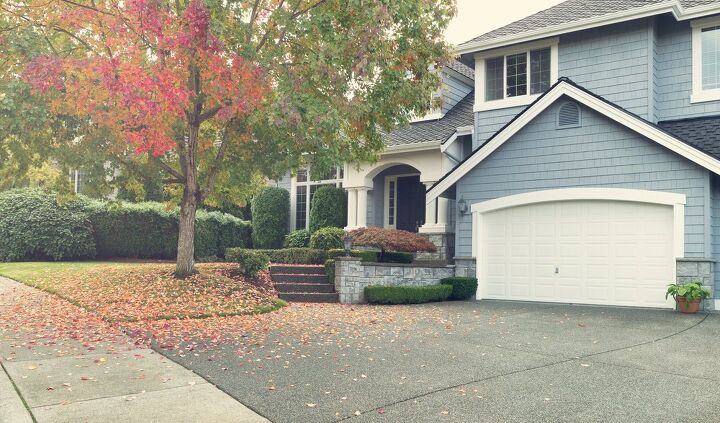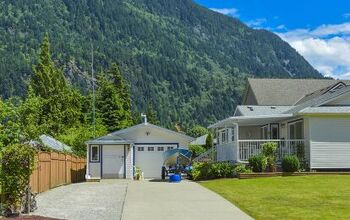Can You Park Over The Sidewalk In Your Driveway? (Find Out Now!)

It’s always great to have people over. The problem is that you always run out of space for parking. As guests park behind each other, it is obvious that your driveway is too short. Can that one last guest simply park over the sidewalk at the end of your driveway?
Parking over any sidewalk is illegal, even if the sidewalk crosses your driveway. Sidewalks are for public use, and a sidewalk that crosses your driveway is part of an easement. The owner of the car that is parked over the sidewalk receives a ticket, and there may also be a fine.
Residential driveways are the subject of much debate, confusion, and disagreement, both with law enforcement and neighbors. Let’s look at why parking over a driveway is illegal. We’ll also look at how you can give your guests more room for parking.
Related Guide: Is It Illegal To Park In Front Of Your Own Driveway?
Don't want to do it yourself?
Get free, zero-commitment quotes from pro contractors near you.

Can You Park Over the Sidewalk in Your Driveway?
You cannot park over the sidewalk at the end of your driveway. Sidewalks are installed by the city or county to give pedestrians a safe place to walk. Without a sidewalk, someone would need to either walk on your property or in traffic. Laws about blocking sidewalks are intended to protect public safety.
Why is Parking Over a Sidewalk Illegal?
At first, it may seem that you have the right to park over a sidewalk that is at the end of your driveway. After all, the driveway is part of your private property, right? In reality, the intersection of your driveway and the sidewalk are part of an easement. This is a section of land that is owned by the city or county. You are granted use of the land for the apron, or entrance, to your driveway.
Easements and Your Property
An easement is land that is owned by one person or entity, and used by another person or entity. In the case of the sidewalk at the end of your driveway, the city or county owns the land. Utility easements are another type of easement in residential areas. In this case, you grant the utility company access to your property for the purpose of installing and maintaining electricity, natural gas, cable television, and other utilities.
How Do I Know If I Have an Easement on My Property?
Easements may be identified in the deed for your property or in documentation attached to the deed. You can also contact your local county clerk to find out about easements for your property.
Street Parking for Guests
Having your guests park on the street may be a viable alternative to parking over the sidewalk at the end of your driveway. Your guests need to abide by all traffic signs and laws.
Some people aren’t comfortable with parking in the street. They may have to walk too far to get to your house, or they may be concerned with damage to their vehicles.
Make Space with a Driveway Extension
A driveway extension is a really great way to give your friends and family plenty of space for parking. It also gives you room for a boat, RV, and other family vehicles. By adding just a few extra feet on either side of your driveway, you can expand the space for parking by a couple hundred square feet or more.
How to Build a Driveway Extension
Look over your front yard to see if you can reconfigure the space to widen your driveway. You may have to give up some of your lawn and landscaping, so there is a tradeoff to consider. You also want to widen your driveway as close to your house as possible.
Choose the Materials
Once you decide where to widen your driveway, it’s time to choose a material. You can use the same material as your current driveway, such as concrete, asphalt, or gravel. Widening your driveway with a different material, though, adds interest to your property. The driveway extension looks more like a border than a paved surface. Consider using concrete pavers, colored gravel, exposed aggregate, or bricks.
How to Widen a Driveway with Pavers, Gravel, and Bricks
Widen a driveway with pavers, gravel, and bricks is fairly easy compared to adding concrete or asphalt. Remove any grass and vegetation, and level the soil. You can put gravel directly on top of the soil.
Concrete pavers and bricks need to be set in a layer of polymeric sand. The material contains a light adhesive that fills the joints between the pavers and bricks.
Driveway Extension with Concrete or Asphalt
You can add new concrete or asphalt to an existing driveway. Level the soil where you want additional parking. Lay down 3” of gravel for a concrete driveway extension, and 6” to 8” of gravel for asphalt. Use 3/4” screened and washed gravel. Compact the gravel, and let it settle for about 24 hours.
For a concrete driveway extension, pour a 4” slab for the extension. Asphalt needs to be 2” to 3” thick for a driveway. As you spread the surface material, pay close attention to the seam with the existing driveway. It needs to be sealed to prevent water penetration that can damage the driveway.
Seal Concrete and Asphalt
Sealing concrete and asphalt protects it from the elements. Seal concrete with a penetrating product after 28 days when the concrete is fully cured. Wait 6 months before applying a sealcoat to asphalt. Seal the entire driveway rather than just the extension.
Don't want to do it yourself?
Get free, zero-commitment quotes from pro contractors near you.

Related Questions
How far does my fence need to be from a sidewalk?
Check local property laws. The distance may not be based on the location of the sidewalk, but the property line. In most places, a fence needs to be 2” to 8” back from the property line.
Can I keep people from loitering at the end of my driveway?
Even though the sidewalk at the end of your driveway is for public use, people cannot loiter at the end of your driveway. Call the non-emergency phone number for local law enforcement.
Conclusion
While it is illegal to park over the sidewalk at the end of your driveway, you do need some extra space for friends and family. Street parking is an option, yet it is not ideal. The best solution is to widen your driveway.

Jennifer L. Eggerton loves being hands-on, whether it's with a home DIY project, making repairs, re-decorating a room, or keeping life organized. She enjoys helping people by sharing her knowledge, insights, and experiences, as well as her lessons learned. In addition to her work as a writer, Jennifer is a Jeep® overlander, self-published author, and nature photographer who loves being outdoors.
More by Jennifer Eggerton



























